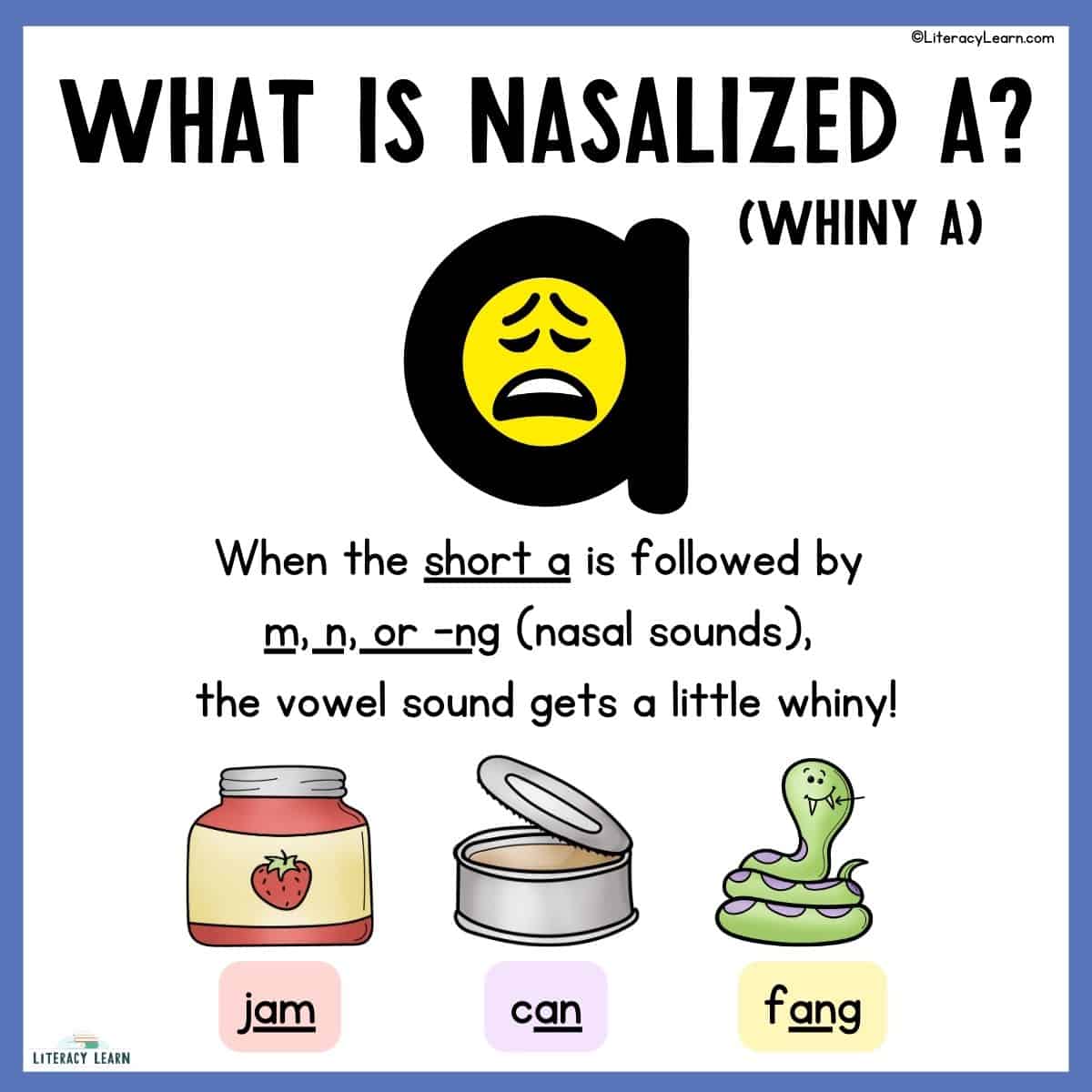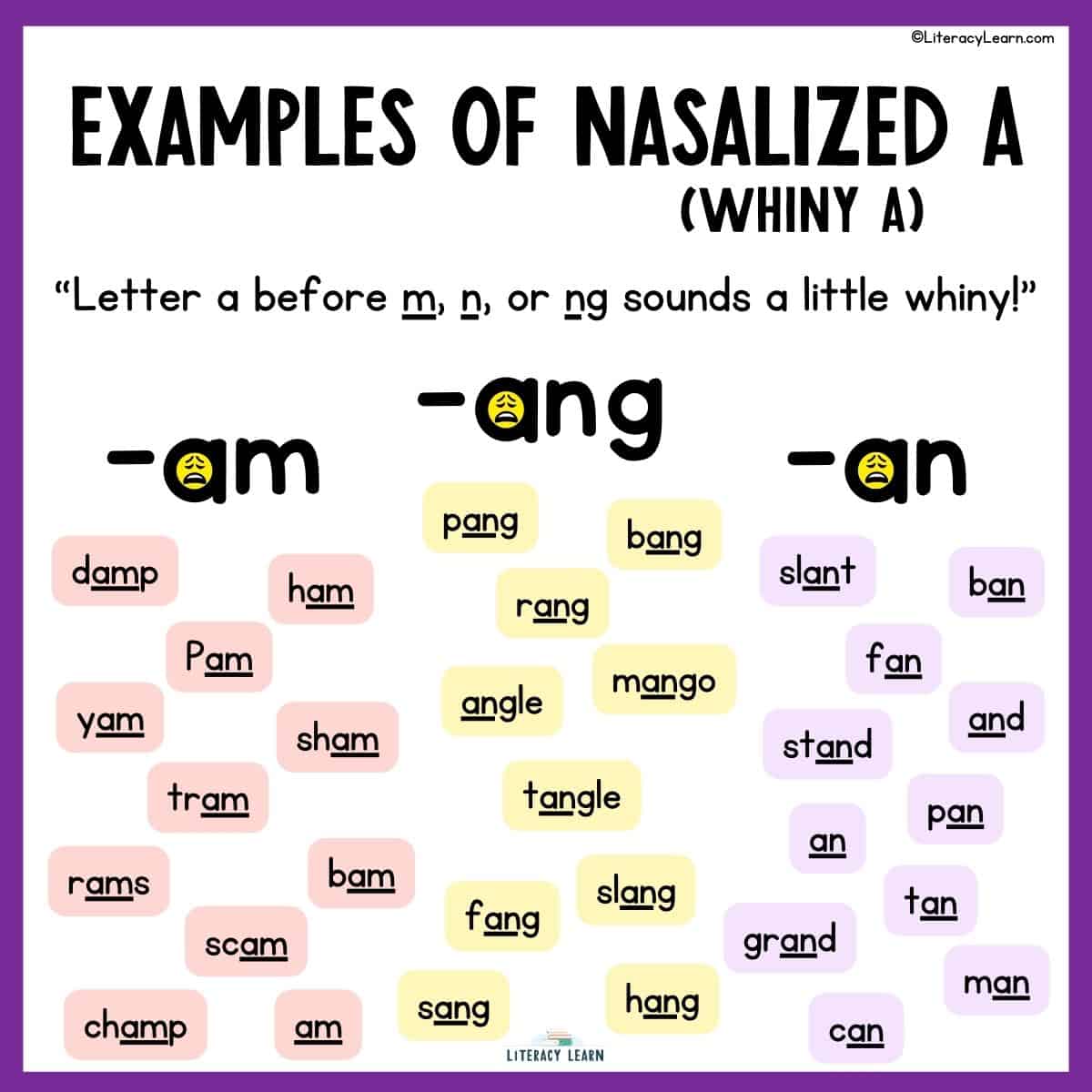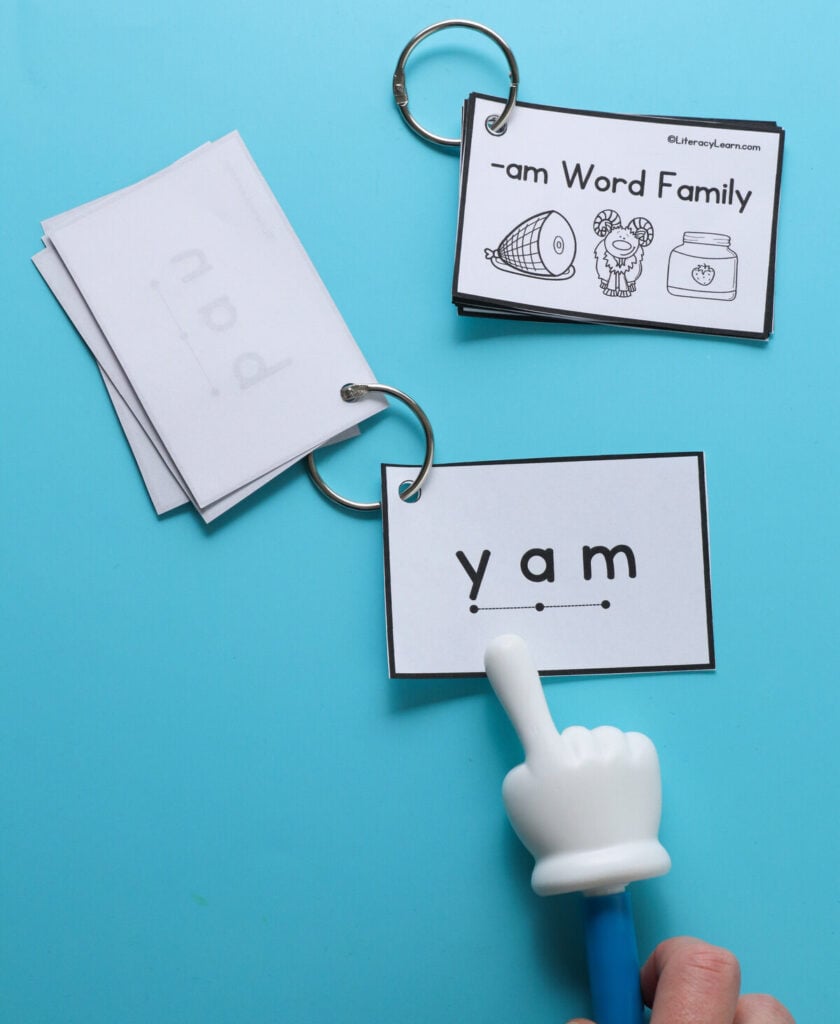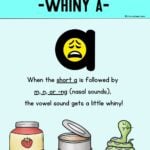What Is Nasalized A (Whiny A)?
This post may contain affiliate links. As an Amazon affiliate, we earn from qualifying purchases.
Have you noticed a slight difference in the short A sound in words like can and jam? That subtle shift is called the nasalized A. Learn what nasalized A is, why it matters, and how to teach it clearly and confidently in your classroom.

What Is Nasalized A?
We explicitly teach our youngest students that the letter A represents the /ă/ sound, like you hear in the word apple.
But in words that end with the letters N or M (nasal sounds), the letter A doesn’t represent the pure short /ă/ sound. Instead, it makes a nasalized short a sound – the vowel sound heard in words like can and jam.
🔊Try It: Compare the vowel sounds you hear in these words: at and am. Can you hear the difference between the short A sounds?
- In the word at, you clearly hear the pure short /ă/ sound.
- In the word am, you hear the nasalized short /ă/ sound, which sounds a little whiny. That’s why some refer to it as “Whiny A.”
👃🏽Because the graphemes m, n, and ng represent a nasal sound (a speech sound produced when the air passes through the nose), the pure /ă/ vowel sound before it changes a bit.
This shift happens naturally in English because of the way our mouths and noses work together to create speech sounds. You can learn more about that by reading about the 44 phonemes in English and using sound walls to support instruction.
Whiny A Is Still Short A!
The nasalized “a” is still the short a sound /ă/, even though it’s influenced by the nasal consonant. Teachers should not introduce it as a different vowel sound, but simply note the way it’s affected in words where m, n, and ng come after the short a.
Some programs teach these letter strings as glued sounds, which can help to make the concept simpler for students to understand.
Why It’s Important to Teach
Understanding the nasalized short A sound in words will help students with both decoding and encoding. Here are some benefits of teaching kids about it.
👉 Prevents confusion: If kids aren’t aware of this sound change, they might misread words with nasalized A.
👉 Builds phonemic awareness: Understanding that vowel sounds can be affected by surrounding letters helps kids decode unfamiliar words more effectively. Use our Phoneme Word Lists and low-prep sound wall to help support your Phonemic Awareness instruction.
👉 Avoids common spelling errors: Many kids mistakenly spell the vowel sounds in am, an, and ang words if they don’t understand the shift. They struggle to figure out which vowel sound they’re hearing, and this often leads to errors. Explicitly teaching them that it’s a nasalized short A helps prevent these mistakes.
👉 Strengthens phoneme-grapheme connections: Kids learn to connect the correct vowel sound to its spelling, reinforcing the predictable patterns in English.
It’s important to note that this nasalized short A sound is not one of the 44 phonemes in English. So, in isolation, we want to keep the vowel sound pure.
Examples of Nasalized A Words

-am Words: am, yam, Pam, Sam, ram, bam, ham, scam, champ, tram, damp, sham, slam, cram, pram.
-an Words: an, can, pan, man, ran, fan, van, and, grand, plan, stand, gland, strand, land, candy, chant, slant, plant.
-ang Words: sang, rang, fang, gang, hang, bang, angle, mango, dangle, tangle, slang.
Teaching Resources
Use these resources to help students better understand and to practice reading and spelling words with the nasalized a sound!

We’d love to hear about your experience using this resource!
Please leave a comment below or tag us on Instagram @literacylearn!

